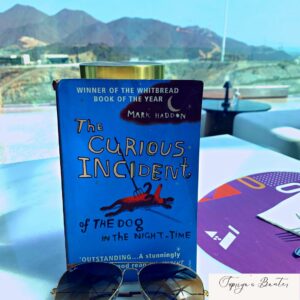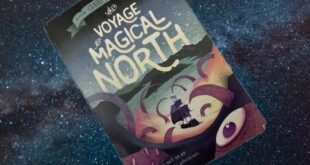
The Curious Incident of the Dog in the Night-time
Author-Mark Haddon
Genre-Mystery/thriller
Publisher-Jonathan Cape
ISBN-0-09-945025-9
White read Book Awards for Best Novel and Book of the Year/Commonwealth Writers’ Prize for Best First Book/Guardian Children’s Fiction Prize
Rating-4/5
What does it mean to be a special needs teenager? How does life or people treat you when you have high functioning autism/Asperger’s syndrome? What if you can’t understand emotions and lack empathy but possess extraordinary mathematical abilities? Not to mention an excellent memory and a love for prime numbers. What if you calm yourself down by detaching your mind at will like Sherlock Holmes or calculating exponents and patterns of the number two?
The book is a window in the mind of a fifteen-year-old boy, Christopher Francis Boone; he is sucked in a mystery that ruptures the threads that hold his world together.
The book kicks off with the murder of a neighborhood dog, Wellington, that Christopher decides to investigate on a whim. And for the same reason, he also decides to chronicle the entire exercise.
He hounds the clues and follows the trail.
And while he is busy counting yellow and red cars to sort the day into super good or super bad categories and dyeing his aloo-gobhi saag with red food color (as he does not like yellow and brown), Christopher steps into a quagmire.
The intriguing and graphic descriptions make the readers feel Christopher’s anxiety as he engages with strangers to unearth information. Haddon makes sure the readers feel Christopher’s angst as he lands in a full-blown panic attack. An anxious, social-phobic Christopher scrambling his way on a bustling London train station, playing hide-and-seek with the police, make some of the best parts of the narrative.
The logical and honest to a fault, police-loving Christopher finds the average human relationship complex and cumbersome. He cannot wrap his head around his parents’ motivations, emotions, drive, or everyday fallacies.
The unique POV tints the book with a compelling sheen, and the dramatic riddle in the first-half spurs the plot on a fast track.
Halfway through, the cat is out of the bag, and the murderer is identified.
The second part deals with Christopher grappling with the truth and his parents struggling with the challenges of caring for someone like him.
Maybe it was just me, but I thought the book dragged a bit after the grand unveiling. And it got a tad repetitive too. For the caregivers of children with autism and its spectrum, the narrative may seem cliché at places.
The ending is different and realistic; Haddon spotlights chaos and anguish without overtly spelling it out. Not once does Christopher pity himself or claim victimhood.
Haddon shows the reader their own world from Christopher’s eyes—sometimes, it’s surreal. He pushes one to rethink the acceptable definitions of mental disorders. What exactly is ‘normal,’ ‘average,’ or ‘special’ after all?
Intriguing and engaging. Grim and poignant at the same time. Clever and insightful.
Don’t expect ground-breaking acuities in the universe of mental disorders, and you won’t be disappointed. By no means is it a navigation guide or decree on Asperger’s or autism.
The book is predominantly about being different and not fitting in. It’s about an outsider finding his place in the so-called normal world.
The book may not be perfect, but if you don’t go in the ifs-and-buts of it, you’ll enjoy the ride. Yes, even the bumps.
Maybe next time you pass a groaning child curled up in a fetal position with his hands pressed against its ears, you’d know better than to wince or pity. You’d instantly hear Haddon’s voice in your head and realize that it probably is the only way the child can feel safe.
The book may make one just a bit more inclusive. And that alone is a deserving reason to pick up the book.
Some though-provoking lines from the book:
When mother died she didn’t go to heaven because heaven doesn’t exist.
My mother was cremated. This means she was put into a coffin and burnt into ash and smoke. The smoke goes out of the chimney and into the air, and sometimes I look up into the sky, and I think that there are molecules of mother up there, or in clouds over Africa or the Antarctic, or coming down as rain in the rainforest in Brazil, or in snow somewhere.
My book was like life, and not all murders were solved, and not all murderers were caught. Like Jack the Ripper.
My memory is like a film. That is why I am really good at remembering things, like the conversations I have written down in this book, and what people are wearing, and what they smelled like, because my memory has a smell track which is like a soundtrack.
Plot
Characters
Entertainment Quotient
Sensitivity
Don’t go expecting ground-breaking acuities in the universe of mental disorders, and you won’t be disappointed. By no means it is a navigation guide or decree on Asperger’s or autism. The book is predominantly about being different and not fitting in. It’s about an outsider finding his place in the so-called normal world.
 Supriya's Banter
Supriya's Banter





